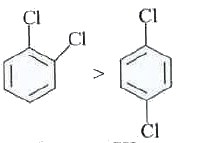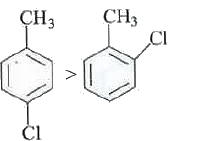Which is correct
Tapetum nourishes the developing pollen
Hard outer layer of pollen is called intine
Sporogenous tissue is haploid
Endothecium produces microspores.
The correct Answer is:A
To solve the question "Which is correct?" regarding the biological concepts related to pollen grains and their development, we can analyze each option provided:
Step 1: Analyze the first option
- Option: Tapetum nourishes the developing pollen.
- Explanation: The tapetum is indeed the innermost layer of the pollen sac (microsporangium) and plays a crucial role in nourishing the developing microspores, which eventually form pollen grains.
- Conclusion: This statement is correct.
Step 2: Analyze the second option
- Option: Hard outer layer of pollen is called entines.
- Explanation: The hard outer layer of the pollen grain is known as the exine, not entine. The entine is the inner layer of the pollen grain.
- Conclusion: This statement is incorrect.
Step 3: Analyze the third option
- Option: Porogenous tissue is applied into the ECM produces the microspores.
- Explanation: The sporogenous tissue is diploid and gives rise to microspore mother cells (microsporocytes), which undergo meiosis to produce microspores. The statement is misleading as it incorrectly describes the nature of sporogenous tissue and its role.
- Conclusion: This statement is incorrect.
Step 4: Analyze the fourth option
- Option: Endothelium produces microspores.
- Explanation: The endothelium is a layer of the microsporangial wall, but it does not produce microspores. Microspores are formed from the microspore mother cells, not the endothelium.
- Conclusion: This statement is incorrect.
Final Conclusion
After analyzing all the options, the only correct statement is:
- Correct Option: Tapetum nourishes the developing pollen.
- Option: Tapetum nourishes the developing pollen.
- Explanation: The tapetum is indeed the innermost layer of the pollen sac (microsporangium) and plays a crucial role in nourishing the developing microspores, which eventually form pollen grains.
- Conclusion: This statement is correct.
- Option: Hard outer layer of pollen is called entines.
- Explanation: The hard outer layer of the pollen grain is known as the exine, not entine. The entine is the inner layer of the pollen grain.
- Conclusion: This statement is incorrect.
- Option: Porogenous tissue is applied into the ECM produces the microspores.
- Explanation: The sporogenous tissue is diploid and gives rise to microspore mother cells (microsporocytes), which undergo meiosis to produce microspores. The statement is misleading as it incorrectly describes the nature of sporogenous tissue and its role.
- Conclusion: This statement is incorrect.
- Option: Endothelium produces microspores.
- Explanation: The endothelium is a layer of the microsporangial wall, but it does not produce microspores. Microspores are formed from the microspore mother cells, not the endothelium.
- Conclusion: This statement is incorrect.
After analyzing all the options, the only correct statement is:
- Correct Option: Tapetum nourishes the developing pollen.
Topper's Solved these Questions
- BOOK - DINESH PUBLICATION ENGLISHCHAPTER - NO IDEAEXERCISE - Check Your Grasp32videos
NO IDEA
- BOOK - DINESH PUBLICATION ENGLISHCHAPTER - NO IDEAEXERCISE - Brain Teasers37videos
NO IDEA
- BOOK - DINESH PUBLICATION ENGLISHCHAPTER - MOLLUSCAEXERCISE - CYG10videos
MOLLUSCA
- BOOK - DINESH PUBLICATION ENGLISHCHAPTER - ORGANISMS AND THE ENVIRONMENTEXERCISE - CYG17videos
ORGANISMS AND THE ENVIRONMENT
Similar Questions
Knowledge Check
- Question 1 - Select One or More
Which are correct regarding boiling point?
A B
B C
C D
D
- Question 2 - Select One
Which is not correct?
AUGG codes for tryptophanBUAA codes for lysineCCysteine is coded by UGU and UGCDTyrosine is coded by UAU and UAC

